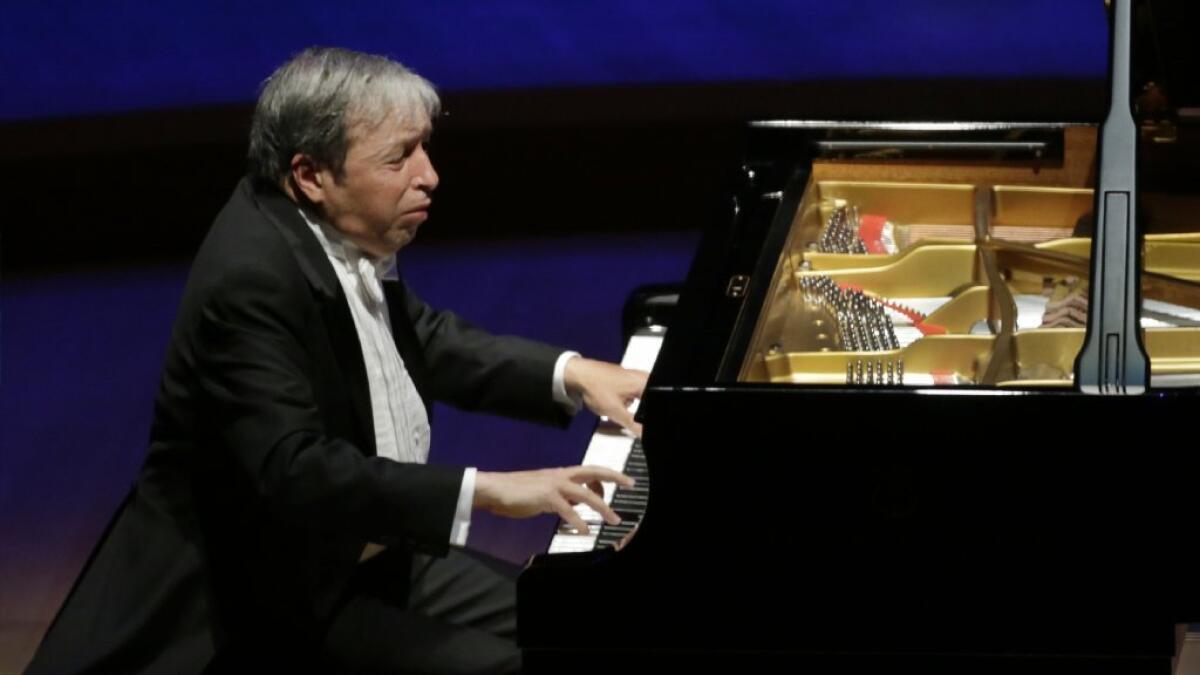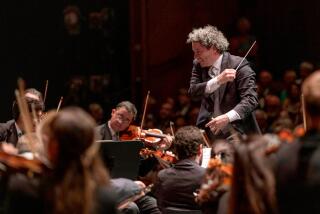Review: Murray Perahia evokes suspense, sadness and exhilaration at Disney Hall

A regular visitor to Los Angeles for over four decades, pianist Murray Perahia appeared at Walt Disney Concert Hall on Sunday, blazing through a treacherous program of music by Bach, Haydn, Beethoven, Franck and Chopin.
In a gutsy, if occasionally untidy recital, Perahia dominated gnarly technical challenges with close-to-reckless speeds. Once a reserved, methodical musician closer in temperament to András Schiff, Perahia emerged after studying with Vladimir Horowitz in the 1980s as an incendiary pianist.
But Perahia’s virtuosity, never fussy, narcissistic or quirky, generates a heightened sense of drama in whatever he plays. At 67, his gifts as a storyteller have deepened.
For example, Perahia brought out plenty of suspense in the recital’s centerpiece, Beethoven’s Sonata No. 26 (Op. 81a), “Les Adieux,” which musically evokes the departure, absence and return of Beethoven’s patron, student and friend Archduke Rudolph.
Perahia mastered each of the composer’s demands, including the opening movement’s tender mood setting and anxiety in the rush of preparations for leaving. He evoked a limbo-like sadness in the middle movement, with the exultation of the finale coming as joyous relief.
The pianist handled Beethoven’s daunting fistfuls of legato double notes and lightening quick staccato chords with undiminished athleticism and stamina.
Perahia began the program in more moderate fashion with a stylistically persuasive account of Bach’s French Suite No. 6, in which the pianist offered fleet-fingered clarity in the opening Allemande, producing delicate ornaments as if caught on the wing. He conveyed the richly textured Sarabande with warmth, and found an exquisite sense of balance and graceful lilt in the concluding Gigue.
Perahia’s account of Haydn’s Sonata in A-flat major (Hob. XVI:46), particularly the central Adagio, became an island of repose in an otherwise rhythmically propulsive recital. His bright, almost sweet tone proved revelatory in Haydn’s ruminative slow movement, which emerged in Perahia’s hands as proto-Romantic in effect.
After intermission, the pianist faced challenges as knotty as those demanded by Beethoven’s “Les Adieux.” In César Franck’s “Prelude, Chorale and Fugue,” a homage to Bach via Beethoven, Schumann and Liszt, Perahia sustained a mystical mood. His assured legato mostly hung tough, but in the fugue he had a bit of trouble bringing out and balancing each of the voices.
In Chopin’s demonic Scherzo No. 1, there were similar issues of balance and clarity, but Perahia sustained the forward momentum, slowing down to render the score’s central carol theme with touching poignancy.
In the first of two encores, Perahia brought out the serene, elegiac nature of Chopin’s Nocturne in F No. 1 (Op. 15). But turbulence returned in Traumes Wirren (Restless Dreams) from Schumann’s “Fantasiestücke,” with Perahia dispatching one of the composer’s most manic and difficult pieces with delightfully exhilarating virtuosity.
More to Read
The biggest entertainment stories
Get our big stories about Hollywood, film, television, music, arts, culture and more right in your inbox as soon as they publish.
You may occasionally receive promotional content from the Los Angeles Times.










